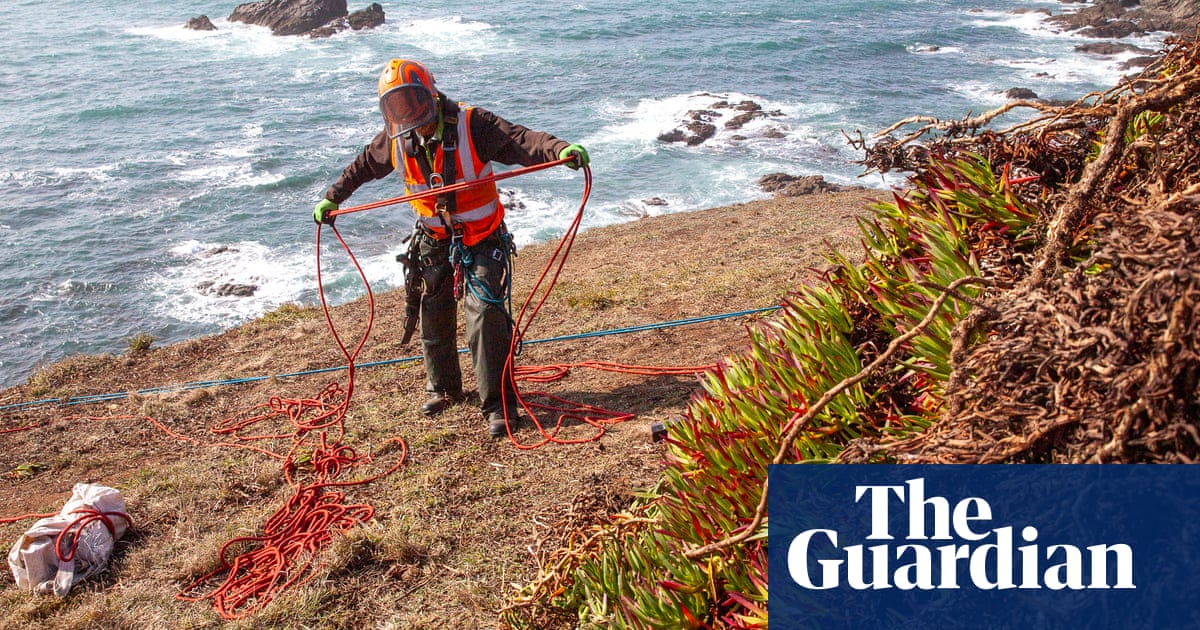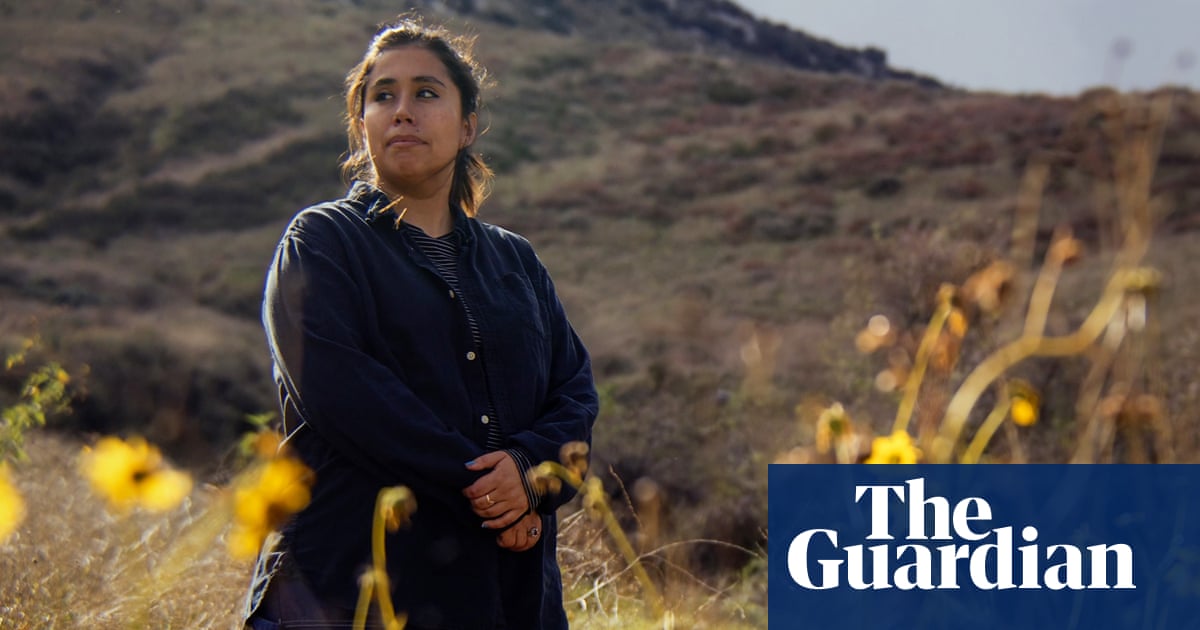Lizard peninsula recovery project aims to save ‘microhabitats’ | Cornwall


The landscape at the most southerly tip of mainland Britain is expansive and grand: rolling heath and grasslands, spectacular cliffs, crashing waves.
But a recovery project funded by Natural England is focusing on unique and vital “microhabitats” found in sometimes overlooked spots on the Lizard peninsula in Cornwall.
The scheme at the Lizard National Nature Reserve aims to nurture lichens, liverworts and wildflowers found on or around the cliffs, rocks, paths and in animal scrapings, ditches and ponds. Though often modest looking, these plants are seen as key to the survival of the whole ecosystem and landscape.
As part of the two-year £350,000 scheme, called the Lizard Rarities Project, scrub is being cleared, new watery areas dug and fire breaks created to help protect the area from an increasing risk of summer blazes.
Seth Jackson of the National Trust, one of the main landowners in the area and a key player in the recovery work, said: “Many of the Lizard specialities, such as twin-headed clover, upright clover and dwarf rush, have become fragmented and lost. The most important and urgent task is to expand wild populations, encourage natural recolonisation and cushion the expected impacts of climate change.”
The mild oceanic climate and unusual geology at the Lizard have created a distinctive landscape. More than 250 species of national and international importance are found here, many of which are found only in this region of Britain.
Karen Shelley-Jones, Natural England’s species recovery programme manager, said: “There is much work to be done. The serpentinite rock on the Lizard is of national importance for lichens and these are at risk from encroaching ivy which has to cleared by hand. Wild asparagus is being crowded out by a creeping blanket of invasive, non-native species hottentot fig and purple dewplant along the cliffs.”
There are 15 species at the centre of the project – three lichens, three liverworts, eight vascular plants and one butterfly. The lichens include Lathagrium (Collema) latzelii, a crusty-looking dark lichen that clings tightly to rocks.
Among the liverworts is black crystalwort (Riccia nigrella), a dark green plant with a bluish sheen that grows in rosette shapes and likes cliff ledges, thin soil on rocks, wall tops, banks and footpaths. Pygmy rush (Juncus pygmaeus) is a rare but striking purple plant that thrives on old trackways.
Some improvements can be made quickly. For example, yellow centaury, a summer annual that does well on heathland paths trampled by cattle or ponies, will quickly take advantage of newly created scraped and disturbed ground.
Others need a little more help. The caterpillars of grayling butterflies feed on the grasses bristle bent and sheep’s fescue, which grow well on the Lizard after targeted heathland burning. So fires will be carefully set to help the grasses grow.
However, uncontrolled fires can destroy habitats and firebreaks are being created to protect isolated species from the effects of increasingly common summer wildfires. Scrub is to be removed from grassland slopes, rock outcrops and old quarries, all excellent habitats. Clearing invasive plants from the cliffs can be particularly tricky, requiring contractors to abseil down the cliffs to get to tucked-away spots.
Ben McCarthy, the National Trust’s head of nature and restoration ecology, said: “While the Lizard has always experienced the full impact of the weather rolling in across the Atlantic, it is the more pernicious impact of a warming planet, invasive species and atmospheric pollution that is accelerating the loss of our most threatened habitats and species.
“The work we’re doing on the Lizard looks to adopt more adaptive approaches to tackle these major drivers of biodiversity loss – specific targeted action where necessary, but more broadly looking to kickstart natural processes that give our most threatened species the best chance to respond to these modern-day pressures.”
Source link




